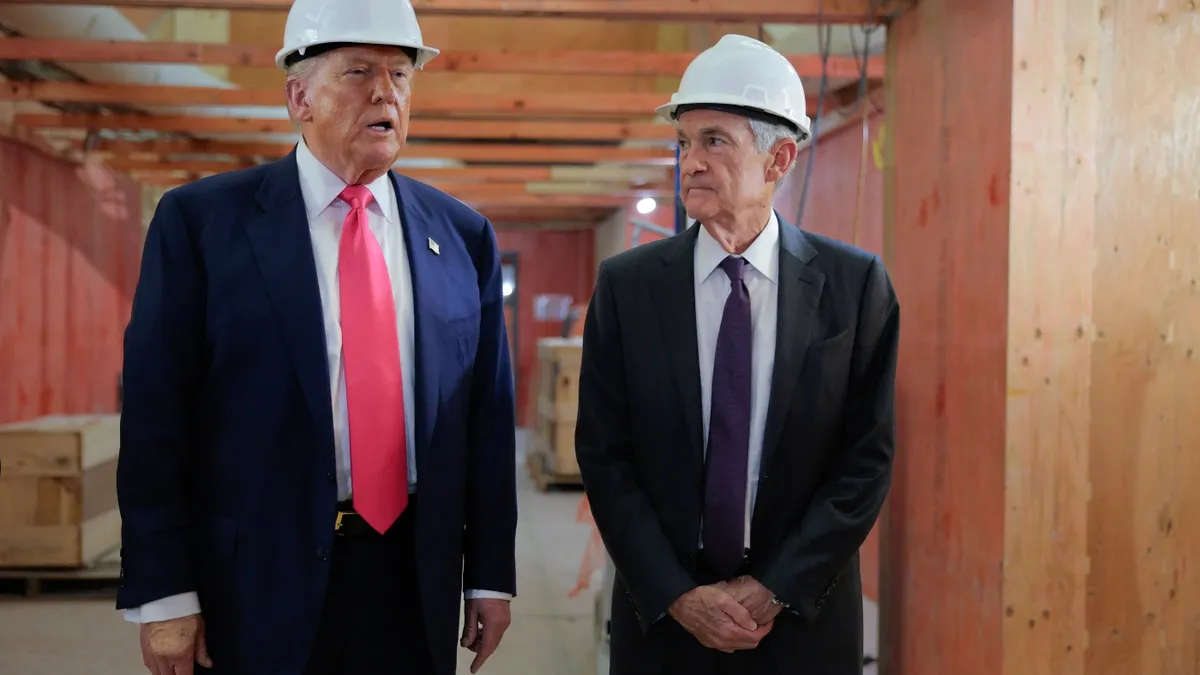
President Trump made headlines on Thursday with his visit to the Federal Reserve in Washington, D.C., to inspect the ongoing renovations of the central bank's buildings. This visit sparked a rare public disagreement between Trump and Fed Chair Jerome Powell regarding the escalating costs of the renovation project, which have surged from an estimated $1.9 billion to $2.5 billion in just a few years.
During the visit, Trump, accompanied by Senator Tim Scott, the South Carolina Republican and chair of the Senate Banking Committee, addressed news cameras while waving a document. He claimed that the costs had risen to an astonishing $3.1 billion. In response, Powell shook his head and disputed Trump's figure, stating that the additional costs mentioned by the president were attributed to a separate building completed five years ago. "I haven't heard that from anybody at the Fed," Powell remarked, attempting to clarify the misunderstanding.
Despite the earlier disagreement, Trump shifted his tone when asked about the project. "I don't want to be personal. I just would like to see it get finished," he said, expressing his hope for the timely completion of the renovations. He lamented the lengthy construction period, suggesting that it might have been better if the project had never begun.
While Trump expressed his desire for lower interest rates, he cautiously sidestepped his recent criticisms of Powell. "Well, I'd love him to lower interest rates, but other than that, what can I tell you?" he said, eliciting a chuckle from Powell. This exchange highlights Trump's ongoing frustration with the Fed's monetary policy, as the central bank has maintained steady interest rates amid concerns about inflation driven by the president's tariffs.
Trump's visit is noteworthy, marking the first time a president has visited the Federal Reserve since 2006 when President George W. Bush attended the swearing-in of Ben Bernanke. This rarity stems from the Fed's long-standing commitment to independence in setting interest rates, a principle deemed essential for maintaining global investor confidence.
In recent weeks, Trump's frustrations with Powell escalated to the point where he threatened to fire the Fed chair. However, he later walked back this threat without completely ruling it out. Powell has consistently indicated his intention to fulfill his term, which expires in May. When asked last year if he would resign at Trump's request, he firmly responded with a "No."
Experts suggest that any attempt by Trump to fire Powell could lead to significant turbulence in financial markets and potentially spark a legal battle, as legal scholars argue that a Fed chair can only be dismissed for just cause, such as illegal conduct. Trump's ongoing criticism of the Fed's renovation project is viewed by many as a strategic move to apply pressure on Powell, possibly as a pretext for dismissal. However, legal experts contend that such an argument would likely not hold up in court.
As the Federal Reserve grapples with rising renovation costs, Powell has attributed the overruns to necessary mitigations for lead and asbestos and to overall inflation that has affected construction costs nationwide. The latest economic data shows that consumer prices have risen by 2.7% over the past year, raising doubts about potential interest rate cuts at the Fed's upcoming policy meeting, despite Trump's persistent pressure.
In summary, President Trump's visit to the Federal Reserve not only highlighted the contentious renovation project but also underscored the ongoing tensions between the White House and the central bank regarding monetary policy. As the situation unfolds, all eyes will be on how these dynamics will impact future economic decisions.